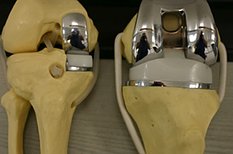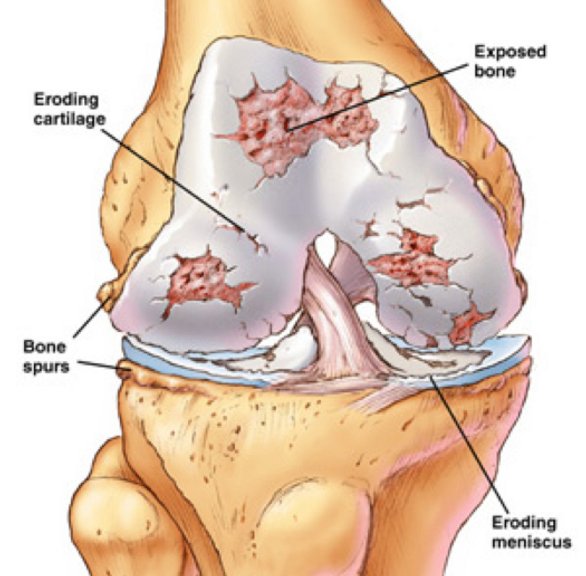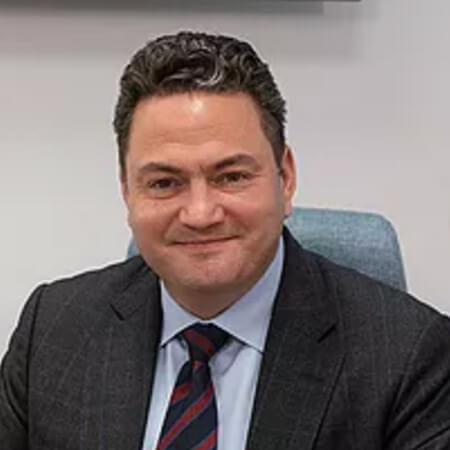Knee Arthritis & Knee Replacement
What is Knee Arthritis?
When the smooth articular cartilage which covers the joint surface is severe and due to wear and degeneration, it becomes irregular, fissured and may fall off revealing the underlying bone. With time, cartilage will disappear, and without the help of cartilage, the bone surfaces will rub together which stimulates bone growth, leading to bone spurs in your knee.
If this happens the underlying bones can rub together, producing the pain and stiffness typical of Arthritis. Severe arthritis can interfere with activities of daily living and limits lifestyle. X-rays of the Knee joint may show joint space narrowing (due to lack of cartilage), and bone spur formation (due to bone rubbing directly on bone).
Who gets knee arthritis?
Osteoarthritis (OA), caused by long-term wear to the joint articular cartilage is the most common. This is a slow progressive process that usually occurs in older patients. Osteoarthritis can happen to anyone but some people are more at risk than others.
Risk Factors are:
- Female >male
- 40 years old +
- obesity
- Injury to the joint such as ligament rupture and meniscus cartilage damage
- Family history and genetic factors such as bowed legs
- Inflammation such as Rheumatoid Disease or Psoriasis.
Signs and Symptoms of knee arthritis
- Dull toothache pain, stiffness and swelling are typical.
- Flare ups often occur
- Inability to continue with daily activities or lifestyle.
Tests and Diagnosis
At Surrey Orthopaedic Clinic our expert doctors will examine your knee, assess the level of pain and limitations of how this is affecting you and perform diagnostic imaging – such as X-rays and MRIs. Your treatment will then be a tailored shared decision to suit your personal needs and aims. The physical, emotional and social aspects of your health will be discussed.
Treatment of Knee Arthritis
There is no cure for arthritis but there are a number of treatments that may help relieve the pain and disability it can cause. These include:
- Lifestyle modification
- Weight loss: reduces stress on the knee
- Switching from high impact activities (like jogging or tennis) to lower impact activities (like swimming or cycling) will put less stress on your knee
- Physiotherapy
- Brace and supports: An “unloader” brace shifts weight away from the affected portion of the knee
- Painkillers: anti-inflammatory tablets
- Corticosteroids (also known as cortisone) are powerful anti-inflammatory agents that can be injected into the joint. These injections provide pain relief and reduce inflammation; however, the effects do not last indefinitely.
- Glucosamine and Chondroitin are substances found naturally in joint cartilage, and can be taken as dietary supplements. Although patient reports indicate that these supplements may relieve pain, there is no evidence to support the use of glucosamine and chondroitin to decrease or reverse the progression of arthritis.
- Self help websites such as www.surreyimsk.com are useful resources for more ideas and information.
Physiotherapy
Once you have knee arthritis and your cartilage is breaking down, your body cannot generate new cartilage. By rehabilitating your knee with a physiotherapist, you may slow down further knee joint damage, reduce pain, and improve your quality of life. Even people with established arthritis can benefit from this, as poor muscles cannot compensate for worn out joints to prevent stiffness.
Physiotherapists can provide you with:
- An individualised exercise program so you can improve your range of motion and strength around your knee, thereby reducing the burden on your knees and reducing pain.
- Hands on physical therapy techniques that will increase your joint flexibility and reduce stiffness and pain.
Surgery Options for Knee Arthritis
Surgery is always recommended only after other treatments described above have failed. There are two main options: Knee Replacement or Knee Re-alignment (osteotomy).
- Total knee replacement is used for the whole joint.
- Unicompartment Knee Replacement or Partial Knee Replacement replaces a specific part of your joint.
- Osteotomy re-aligns the leg to remove load off the worn half of the knee. This has very good results in specific circumstances.
- There is strong evidence that shows a timely operation will save function and activity levels.
- We actively monitor our outcomes to ensure the highest standard of care is maintained.
Partial and Total Knee Replacement
Do I need a Knee Replacement?
If you have tried conservative treatments (physiotherapy, activity modification, weight loss, injections, simple pain killers and anti-inflammatory medications) and are still experiencing severe pain in the knee that limits your everyday activities like walking, sleeping, climbing stairs, getting in or out of chair, then it may be the best option for you to consider knee replacement surgery. During surgery your surgeon will remove the damaged cartilage and bone, and then position new metal or plastic joint surfaces to restore the function of your knee.
80-90% of people who receive the surgery have improved function and decreased pain. However, it is important to enter the surgery as strong as possible to increase your chances of success, and it is also essential that you commit yourself to a strict rehabilitation process after surgery. Expected post surgery rehabilitation is over 3-6 months. Some people might need more time to heal than others (12-14 months).

ADDITIONAL INFORMATION
Our Orthopaedic Knee Surgeons








